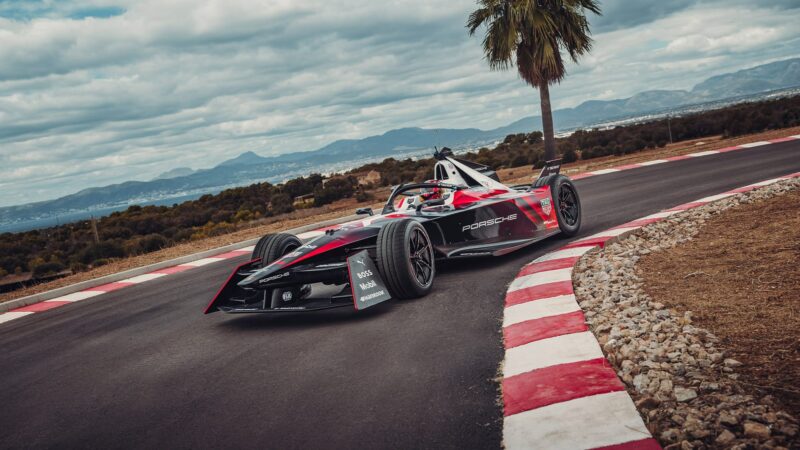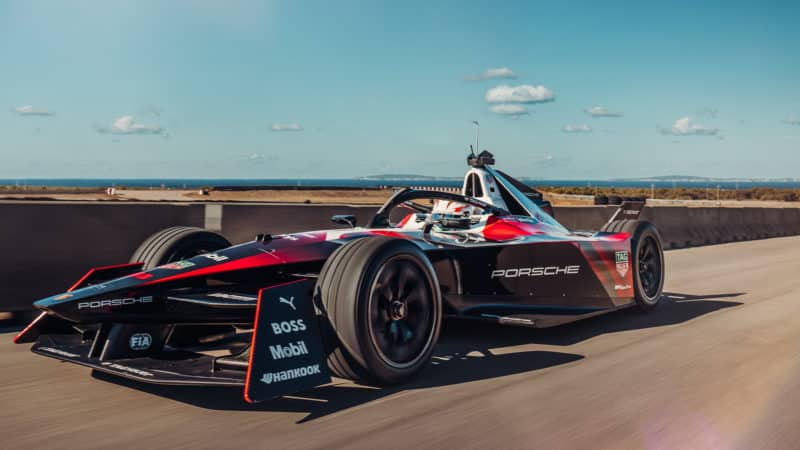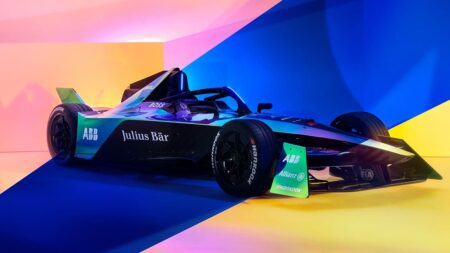The trouble is because everything is so new, testing for most teams – including Porsche, which has completed more miles than most – hasn’t been going too well. A little more than two months before the first race, there are wrinkles of concern about the state of things when the series lines up in Mexico in January. The problems have surrounded the spec parts, from the likes of battery supplier Williams Advanced Engineering, and there are also serious doubts over the much-vaunted fast-charging pitstops, designed to add a sporting tactical element rather than acting as a necessary means to go the distance.
There’s an awful lot on the line for Formula E, which has taken its fair share of knocks in the past year as double champion Mercedes EQ, BMW and Audi have all walked away. Of Germany’s big four, only Porsche has kept the faith. The series could do with a clean launch for the new era.
On Monday night, Porsche Motorsport vice-president Thomas Laudenbach was defiant in his defence of the series and worked to play down the troubles – while also admitting they were all too real and troubling. “I would say testing is going… OK, we’ve had some things with the common parts which has affected all of us,” he said. “It will be tough. Not everything is sorted yet, so it’s not finalised. We have another two months to go. I remain confident that we will see all the cars in Mexico. But there is still some things to do.
“We’ve had some issues with the battery and other things, but we shouldn’t overestimate it because it’s a brand new car. When you bolt something new together it’s never just fine. Of course you are happy if everything works fine at the first attempt, but I’ve been in this business for 25 years and I’ve never experienced that. We are going to the edge, you know? We are looking for the boundaries.”

Gen3 tech takes electric racing to the edge, says Porsche
Porsche
The prologue test in Valencia next month will give a true picture of the state of play. Laudenbach said the teams are collaborating when it comes to solving the spec-part problems – but is he worried about that first round in Mexico?
“I’m not concerned,” he said with care. “I’m not saying everything is sorted, but I’m confident we will have a very nice grid with everything working well.” As for the fast-charging pitstops, the sporting regs for season nine have yet to be confirmed… and clearly the clock is ticking loudly. They are still part of the plan, he says, before adding: “The decision must be taken soon.” Clearly.
“I cannot imagine racing without battery-electric vehicles and there is no other series on the level of Formula E”
As for the loss of Porsche’s big rivals, Laudenbach maintains that Formula E still serves its purpose to develop technologies that find their way to the road, as the drive towards electrification continues. He cites the rivals the team still faces – DS, Jaguar, Nissan, Mahindra, NIO 333, plus teams now carrying the names of Maserati and McLaren. “Maybe they have made a mistake, we will see,” he says of the departed German giants. “At Porsche, we have a clear vision of electrification on the public road. At the same time motor sport is deeply rooted in our brand. Motor sport has to be relevant. I cannot imagine racing without battery-electric vehicles and there is no other series on the level of Formula E.”
As he says, Porsche has full electric covered with Formula E, hybrids through the new LMDh programme, and bio-fuels are a focus with combustion-engined GTs. What it doesn’t yet have – famously – is the icing on the cake: a Formula 1 programme for the new manufacturer-friendly regs in 2026.
Laudenbach reiterates what we’ve heard before: “Obviously talks with Red Bull have stopped, they are off the table. But that doesn’t mean F1 in itself is no of interest. That’s where we are.” But he professes ignorance of what comes next for Porsche and F1 beyond that. It’s a tall order for the company to take the risk of going it alone and setting up a new team from scratch. But as Mark Hughes told us last week, Porsche is proud, its people are full of ambition – and the desire to put one over Volkswagen stablemate and fierce rival Audi will be strong. You never know.


